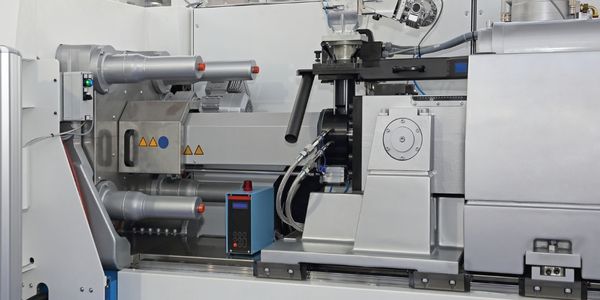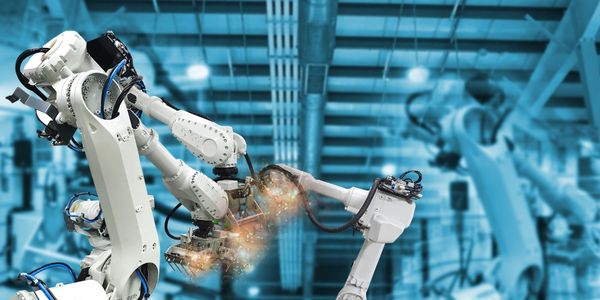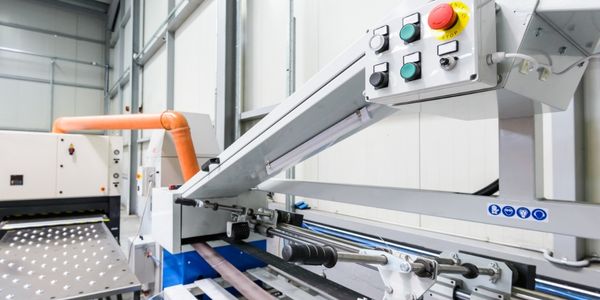Customer Company Size
SME
Region
- America
Country
- United States
Product
- Acumatica Financial Management
- Acumatica Distribution Management
- Acumatica Project Accounting
- JAAS Advanced Manufacturing Software (JAMS)
Tech Stack
- Cloud Technology
Implementation Scale
- Enterprise-wide Deployment
Impact Metrics
- Cost Savings
- Productivity Improvements
Technology Category
- Platform as a Service (PaaS) - Application Development Platforms
Applicable Functions
- Discrete Manufacturing
- Procurement
Use Cases
- Manufacturing System Automation
Services
- Cloud Planning, Design & Implementation Services
About The Customer
Opflex Technologies is an environmental manufacturing company based in Indianapolis, Indiana. They manufacture and sell specialized foams that are used in a variety of applications. Their OPFLEX® Open-Cell foams are used to purify water, filtering out contaminants without sending them to landfills. The company also produces High Performance Closed-Cell foams using LCI® Technology, which are used in a wide range of markets. These foams are used in sporting goods such as running shoes, ski boots, and football helmets, as well as in gaskets, seals, and packaging. All of Opflex's products are manufactured 100% in the USA, and the company prides itself on sustaining and creating American jobs with green technology.
The Challenge
Opflex Technologies, based in Indianapolis, Indiana, manufactures specialized foam products that are used in a variety of applications, including water purification and sporting goods. However, the company's previous systems were manual and disjointed, effectively utilizing a cash basis of accounting. This resulted in lower margin transactions and hindered the company's ability to service higher margin products. The company needed a solution that would allow them to make strategic decisions on the customer base to service, determine product costs by SKU, and prioritize the customer base.
The Solution
Opflex Technologies chose Acumatica and its integrated manufacturing software solution, JAAS Advanced Manufacturing Software (JAMS), to address their needs. Acumatica's capabilities, including its pure Cloud technology, made it ideal for Opflex. The complete solution helped the company make strategic decisions by providing more complete insights into their business. Opflex purchased Acumatica Financial Management, Distribution Management and Project Accounting Suites, along with JAMS, and implemented it all in a shortened time frame so the business could be managed cost effectively. The production staff now has access to the production system with JAMS and is an integral part of the transactional process.
Operational Impact
Quantitative Benefit

Case Study missing?
Start adding your own!
Register with your work email and create a new case study profile for your business.
Related Case Studies.

Case Study
Plastic Spoons Case study: Injection Moulding
In order to meet customer expectations by supplying a wide variety of packaging units, from 36 to 1000 spoons per package, a new production and packaging line needed to be built. DeSter wanted to achieve higher production capacity, lower cycle time and a high degree of operator friendliness with this new production line.

Case Study
Robot Saves Money and Time for US Custom Molding Company
Injection Technology (Itech) is a custom molder for a variety of clients that require precision plastic parts for such products as electric meter covers, dental appliance cases and spools. With 95 employees operating 23 molding machines in a 30,000 square foot plant, Itech wanted to reduce man hours and increase efficiency.

Case Study
Fully Automated Visual Inspection System
Tofflon has developed a fully automatic machine that uses light to inspect vials, medicine bottles, or infusion containers for glass fragments, aluminum particles, rubber grains, hairs, fibers, or other contaminants. It also detects damaged containers with cracks or inclusions (microscopic imperfections), automatically removing faulty or contaminated products. In order to cover all production processes for freeze-dried pharmaceuticals, Tofflon needed to create an open, consistent, and module-based automation concept.

Case Study
SAP Leonardo Enabling Rocket Science
At times, ULA has as many as 15 different operating systems dedicated to overlapping processes, such as rocket design, testing, and launch. Multiple systems created unnecessary costs and unwanted confusion among workers at offices, factories, and launch sites in different location. In order to improve collaboration and transparency during vital activities that directly influence mission success, ULA wanted to improve data sharing and streamline manufacturing processes.

Case Study
IIC Smart Manufacturing Connectivity for Brown-field Sensors
The discrete manufacturing domain is characterized by a strictly hierarchical structure of the automation systems, commonly referred to as the automation pyramid. Data acquired by a sensor typically flows through an IO-module into a Programmable Logic Controller (PLC) which manages the local real-time control system. As all process data are concentrated in the PLC, re-programming the PLC and thus, implementing interfaces to access these data appear to be the natural choice to transfer them to the IT system. However, for brownfield installations this choice has proven impracticable for the following two reasons:In brownfield facilities, PLC usually operate within a once-specified environment and are rarely re-programmed. That is why the active staff is often not familiar with the code and lacks of the competence to modify the existing implementation in a reasonable amount of time.Furthermore, for cost reasons, any PLC was selected to exactly match the requirements of the environment within which it was intended to operate. That is why it cannot be assumed that a PLC will be able to support additional tasks such as communicating data through additional interfaces.

Case Study
Smart Factory Solutions for Tobacco Industries: Bridging the Manufacturing Generation Gap and Improving Operational Efficiency
The tobacco industry, represented in this case by British American Tobacco (BAT), is facing a decline in cigarette volumes worldwide. This decline has led to an increased emphasis on efficient supply chains and optimized production processes. The industry is also grappling with the need for agile production facilities and the integration of Industry 4.0 to accommodate diverse production requirements. BAT, in particular, was seeking a factory solution to automate their product control processes, from the transportation of tobacco and cigarette paper to the placement on cigarette machines and the packing conveyor. The company also needed to support the continuous use of legacy equipment, such as relay-controlled cigarette machines dating back to the 90s and AMK servo drive systems, to sustain production levels at speeds of 8000 to 16000 pieces per minute. Furthermore, changing regulatory guidelines necessitated flexibility in labeling requirements.







